LifeStyle
A Garden With A View
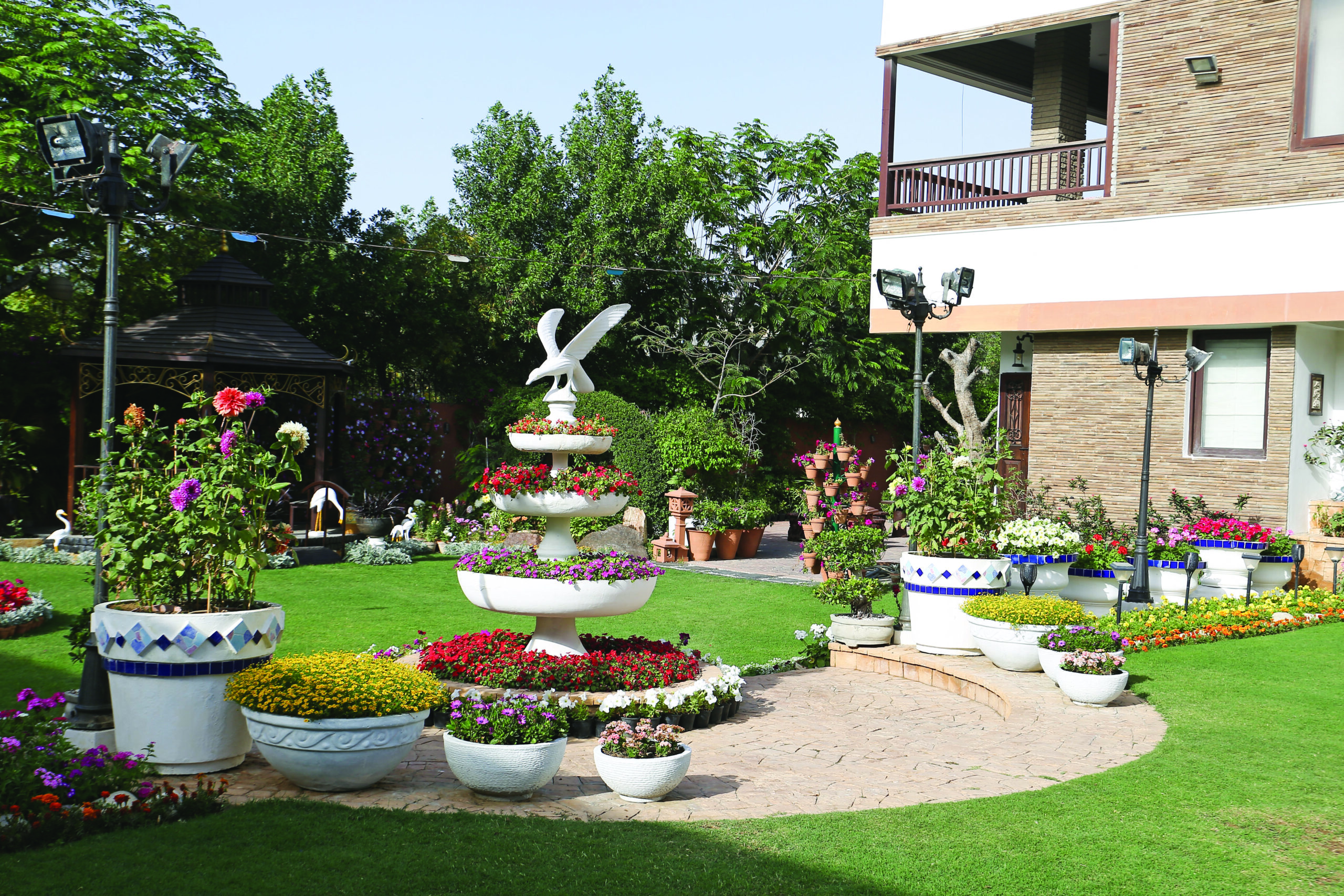
By Khursheed Hyder
Afshan Farooqi’s garden is the talk of the town, specially during spring time. Sprawling on a huge area in the middle of the built home structure, it houses flowers and rare plants set in tastefully designed areas. Her brother-in-law Kaleem Farooqui, a known businessman, and her husband Naeem Farooqi take huge interest in maintaining the aesthetically pleasing garden throughout the year.
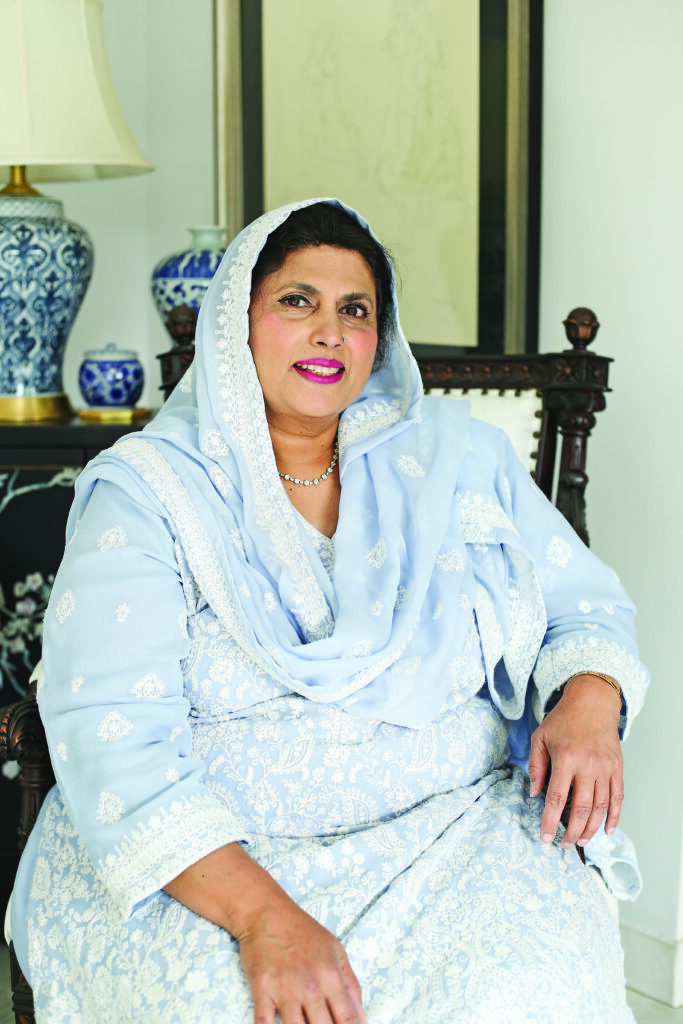
Afshan Farooqi got interested in gardening through her father, “I think it was in the genes. My father was the first Pakistani Ph.D. in agriculture from UCLA.”
Growing up in an apartment in Rome, they had a small garden and Afshan’s mother was always experimenting with lemon seeds, beautiful rose bushes and various fruits. After her own marriage, she was very lucky to be married into a family of renowned horticulturists. “My father-in-law loved his green lawn and also planted various basic flowers and vegetables in his garden.”
Spring, says Afshan, is the best time in their enclave, “as our elders call it.” Work starts in the huge garden area at the end of August/September and seeds are planted by her husband all the way to January. “My brother–in-law Kaleem Farooqui who is our backbone in the enclave has very beautifully documented each season for the last 30 years.
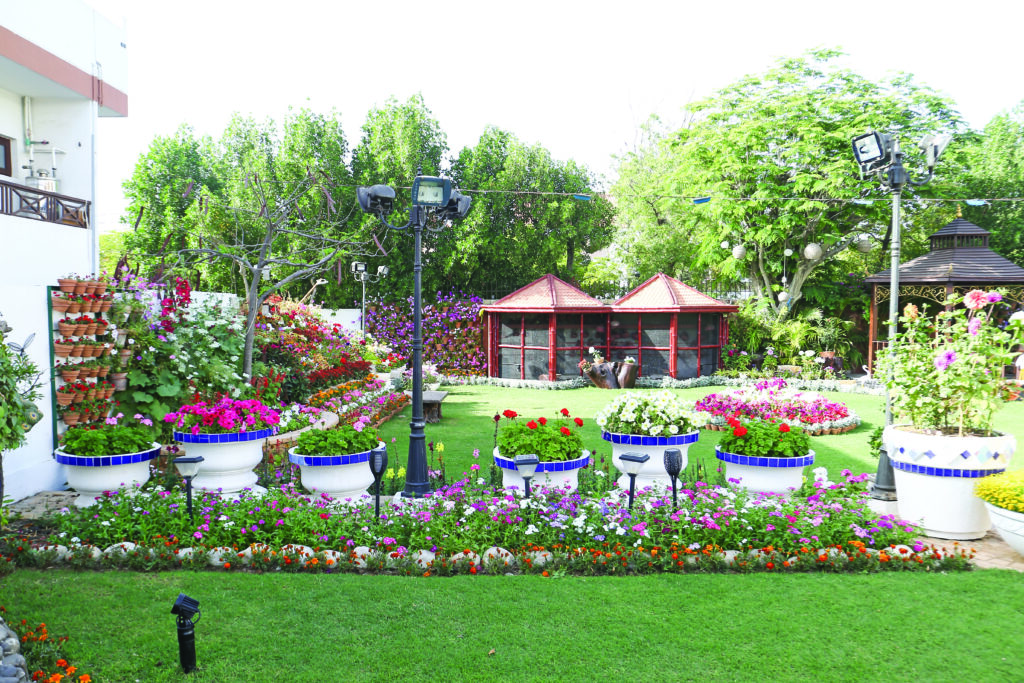
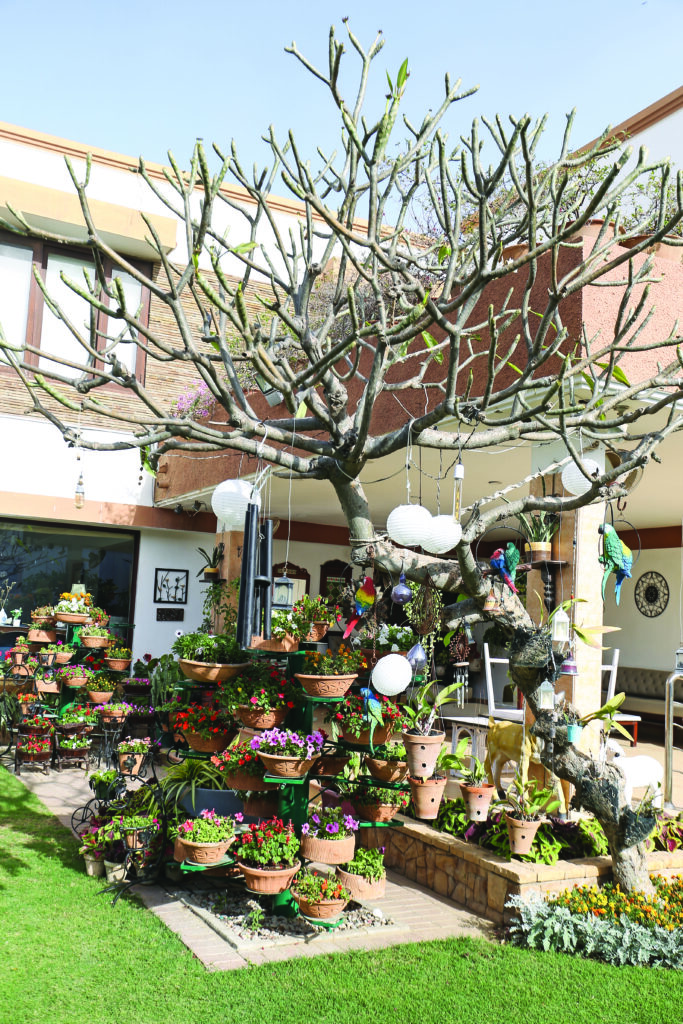
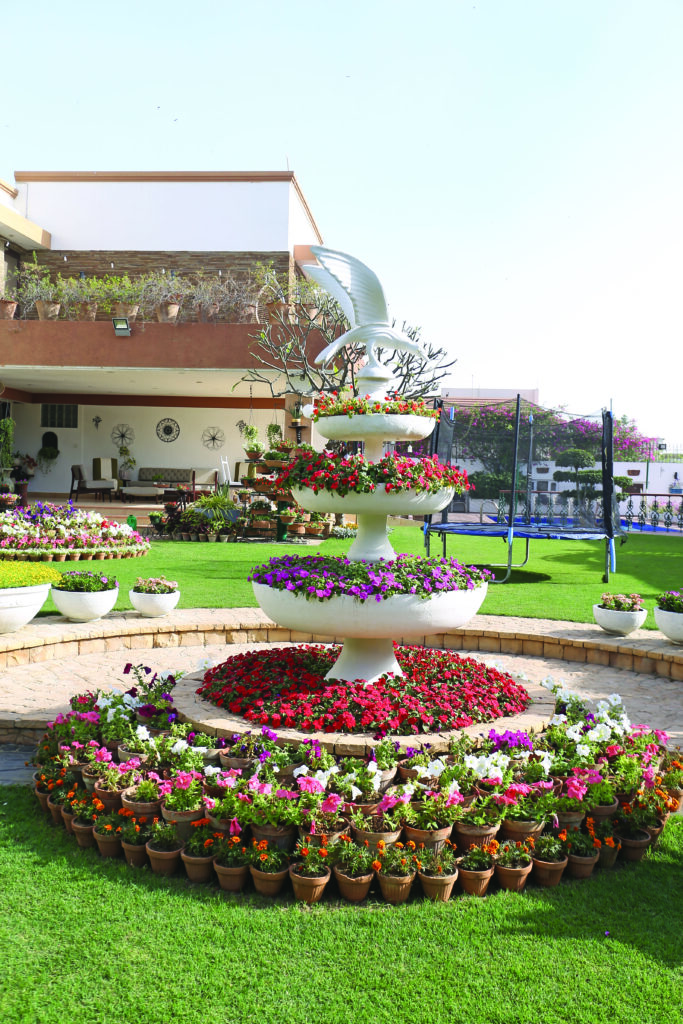
Different seeds are sowed at different times so that they all bloom around the same time which is the last week of February and first week of March. The garden transforms into a riot of colours with beautiful designs and fragrances, which guests enjoy when they are invited in the spring to witness the transformation. The garden festival has become iconic as people from all walks of life such as celebrities, politicians, consul generals, officials, friends and families are invited in the tea parties held for more than a week to celebrate the season.
The outstanding features for Afshan is the orchids section which is her favourite flower. “We got exposure to beautiful orchids in Manila, and I did an in-depth study about orchids to learn how to treat and maintain them in our challenging environment when it is not so humid.”
Apart from the time spent in taking care of the garden, Afshan wears a lot of working caps as she does not believe in sitting idle. She holds the position of Vice President of the Ladies Horticultural Club of Karachi in which they have monthly meetings and different activities to create an atmosphere of learning. “We did a plant gala recently and people bought a lot of plants and learnt how to take care of them, tutored by the committee members. Afshan also has a catering business ‘Bombay Bhel,’ the specialty being Bhel puri. “We make many other savoury things and have several outlets around the city.”
In the end Afshan Farooqi says life is a gift from God. “I love life and have learnt a lot from the ups and downs. It is very important to learn new things in your lifetime. There is nothing you can’t do. Just keep focused and always try to do your best,” she emphasized.


